Sanxingdui new: add a new certificate to the diversity of Chinese civilization
Author:Xinhua News Agency Time:2022.06.14
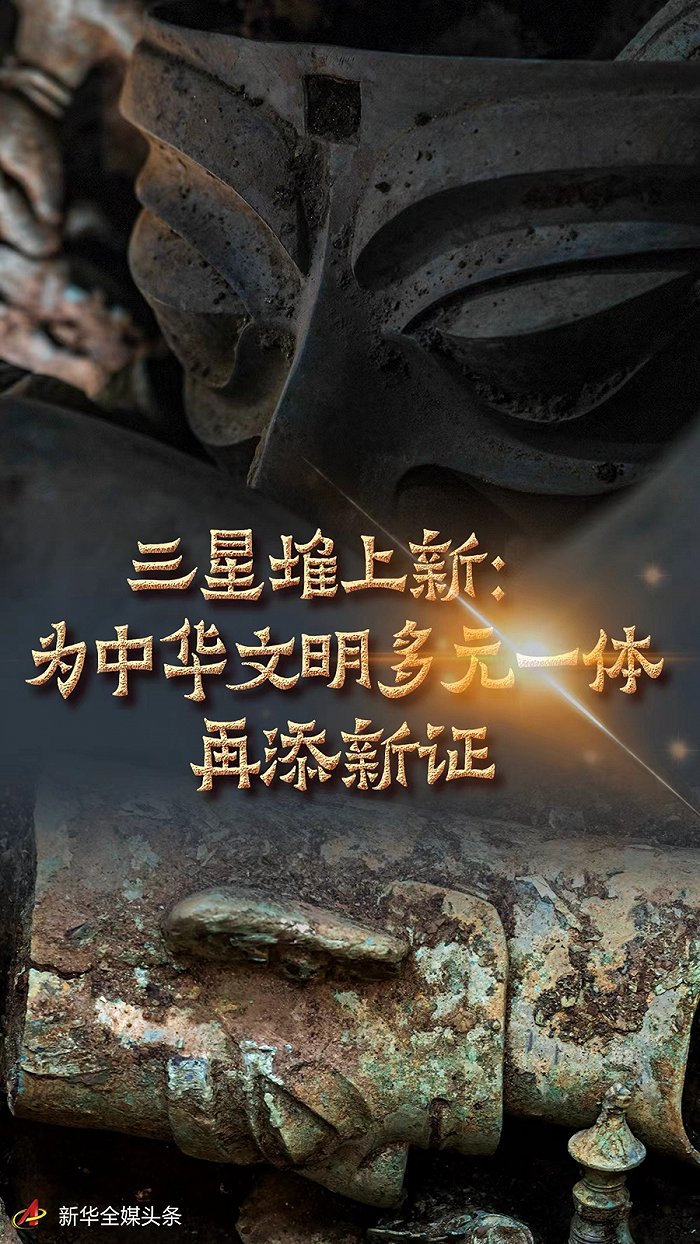
Poster design: Pan Hongyu
"Moonlight Treasure Box", copper pork nose dragon shape, top -respected snake body copper portrait, golden mask copper head ... On the 13th, the Sichuan Provincial Cultural Relics and Archeology Research Institute announced in Guanghan, Sichuan, the latest archeological results of Sanxingdui sites since September last year The "new" cultural relics with a peculiar shape of the counts have enriched the bronze category of the Sanxingdui site, showing a richer type and cultural connotation, which not only reflects the diversity and richness of Chinese civilization, but also witnessed the civilization of the Chinese land. Early exchanges and mutual interaction added new physical evidence to the diversification of Chinese civilization.
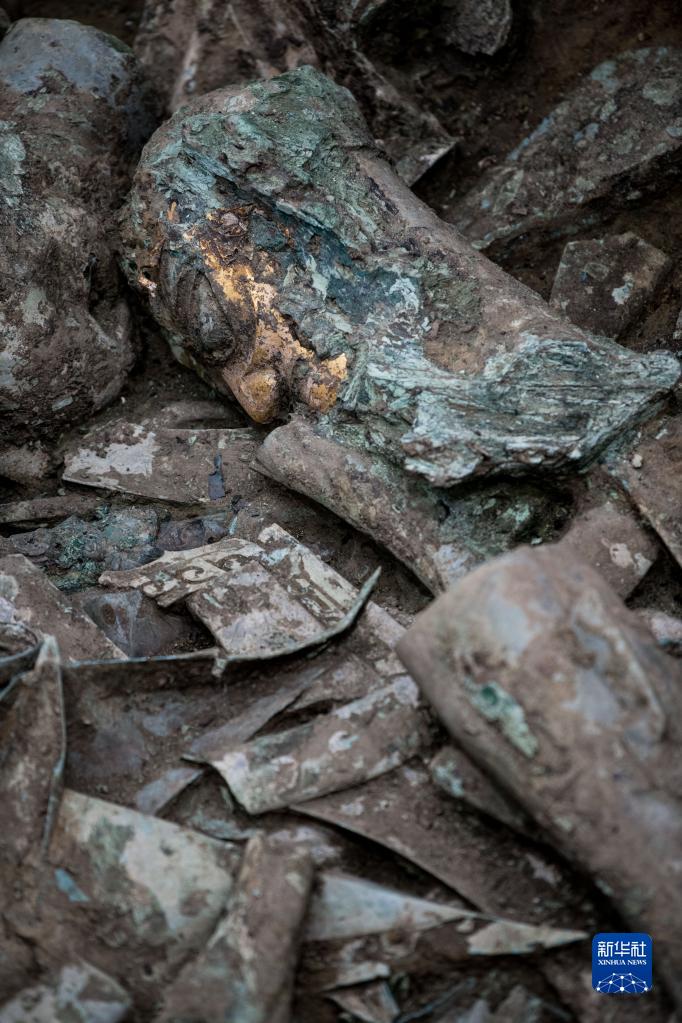
This is a bronze head (taken on May 31) at the "Sacrifice Pit" at the Sanxingdui site No. 8. Xinhua News Agency reporter Tang Wenhao Photo
Since 2020, the Sichuan Provincial Institute of Cultural Relics and Archeology, Peking University, Sichuan University and other scientific research institutions and universities formed a joint archaeological team to explore in Samsung Dou's sacrifice area. It was discovered next to the "sacrifice pit" discovered in 1986. Six "sacrifice pits" from No. 3 to 8, about 3000 years ago. Up to now, six "sacrifice pits" have unearthed nearly 13,000 cultural relics, including 3,155 relatively complete cultural relics.
I have never seen "artifact" before
Entering the archeological greenhouse of Sanxingdui, the reporter saw that the "sacrifice pit" on the 3rd and 4th has ended the field excavation. The "sacrifice pit" on the 5th and 6th has entered the laboratory's archeological stage and the interior cleaning of buried cultural relics. Cultural relics are mainly concentrated on the 7th and 8th "sacrifice pit".

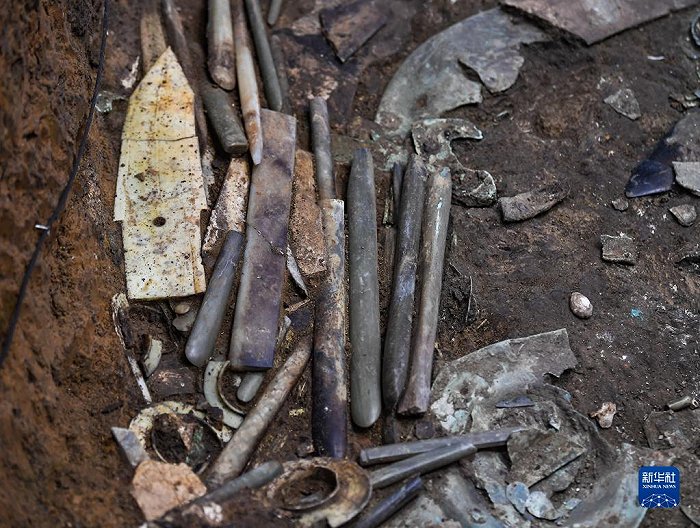
This is the jade articles taken at the "Sacrifice Pit" at the No. 7 Sanxingdui site (taken on June 1). Photo by Wang Xi, a reporter from Xinhua News Agency
Standing next to the 7th "sacrifice pit", there is a blue green in front of the eyes, which can be described as "dazzling." Li Haichao, a professor at the Sichuan University Archeology and Cultural Expo College, who is responsible for the excavation of the No. 7 "sacrifice pit", introduced that the No. 7 "sacrifice pit" is characterized by more jade and small bronze wares. Jade articles include bundling long jade chisels, three -hole jade shapes, jade axes, jade crickets, etc. Although the bronze -shaped dragon shape, bronze standing, bronze bell and other bronze wares are delicate. One of the bronze phoenixes with less than 10 cm long, the tail feathers are clearly rooted, which is a masterpiece that reflects the high super -super -casting skills of the ancients.
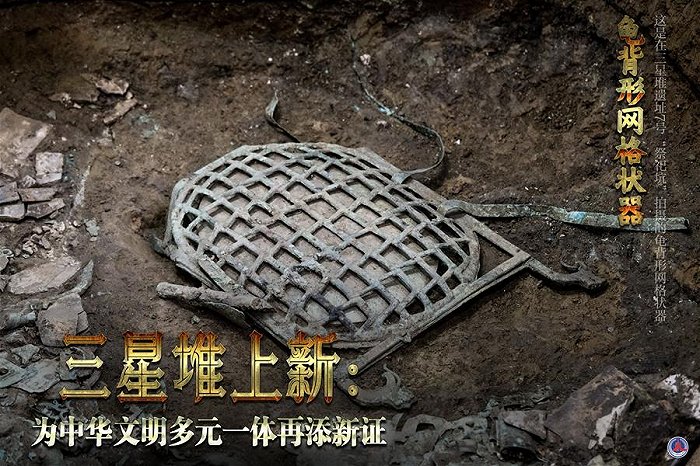
Between so many small cultural relics, an oval grid -shaped cultural relics are particularly conspicuous. Treasure Box ".
"It's very shocking. There is no such utensil in the past. This is an unprecedented discovery." Li Haichao told reporters that there are silk traces on this cultural relic. The pages are also attached with four bronze faucet handle and two or three bronze ribbons. The most surprising thing is that a bronze ware also equipped with a blue and green jade ware with a large and small shape, which is equivalent to a delicate copper box wrapped in silk. A piece of beautiful jade.
In the archeological square cabin, No. 8 "Sacrifice Pit" separated from the No. 7 "Sacrifice Pit" is characterized by large bronze wares. The typical bronze avatar of Sanxingdui has recently discovered nearly 70 pieces, which is more than the number of "sacrifice pits" discovered in 1986.
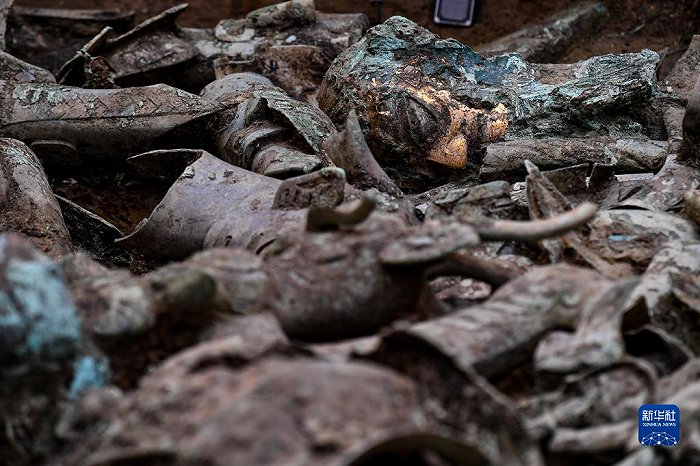
This is a bronze head (taken on June 1) at the "Sacrifice Pit" at No. 8 Sanxingdui Site. Photo by Wang Xi, a reporter from Xinhua News Agency
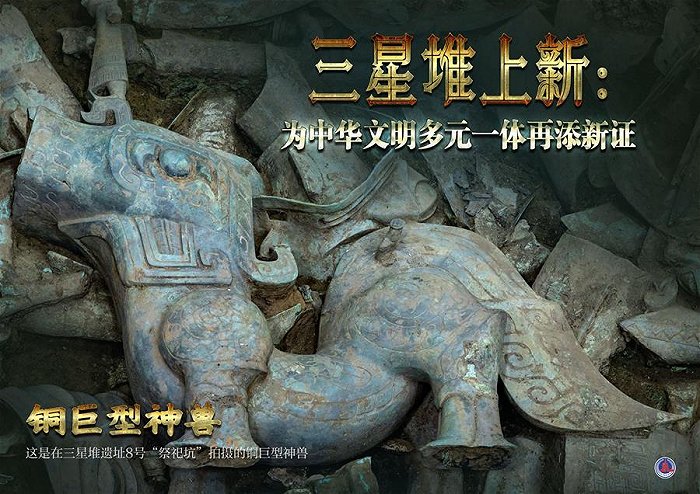
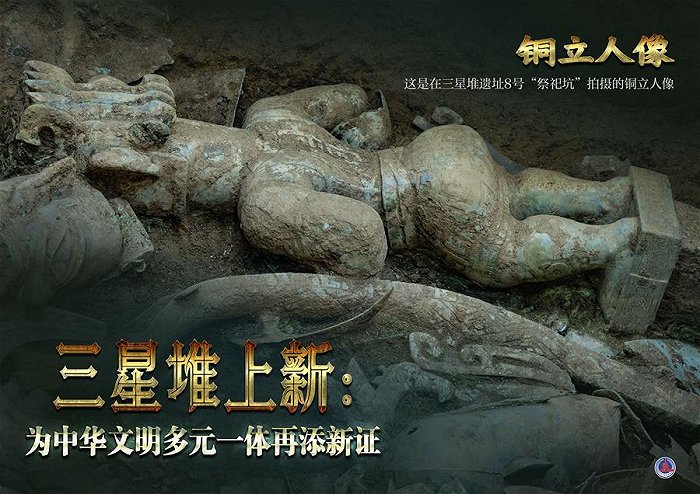
In addition to the copper dragon that has been announced earlier this year, archeologists have also discovered the golden mask copper avatars, the copper portrait of the top snake, the exquisite and complex copper altar, and the copper giant beast like "machine dog", the "wrap skirt and shoulder back big back "Copper portrait, copper pork nose dragon shape, copper wearing ivory portrait, copper god hall cover, stone 磬, etc., several of them are the first discovery in archeological history.
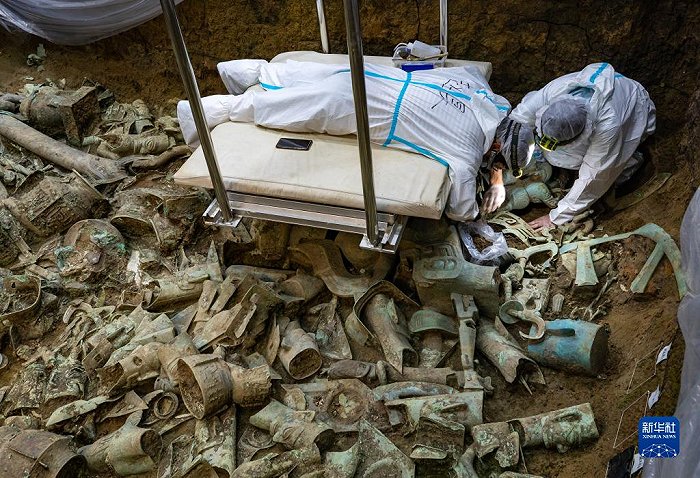
At the "Sacrifice Pit" at No. 8, Sanxingdui site, Zhao Hao (left), the head of the "Sacrifice Pit" of No. 8 and the associate professor of the Archaeological Board College of Peking University, cleaned the copper altar (photographed on June 1) with archeologist Ren Junfeng. Xinhua News Agency reporter Shen Bohan Photo
In the eyes of Zhao Hao, the person in charge of the excavation of the 8th "sacrifice pit" and the associate professor of the Peking University Archaeological Expo College, the copper altar is undoubtedly very important.
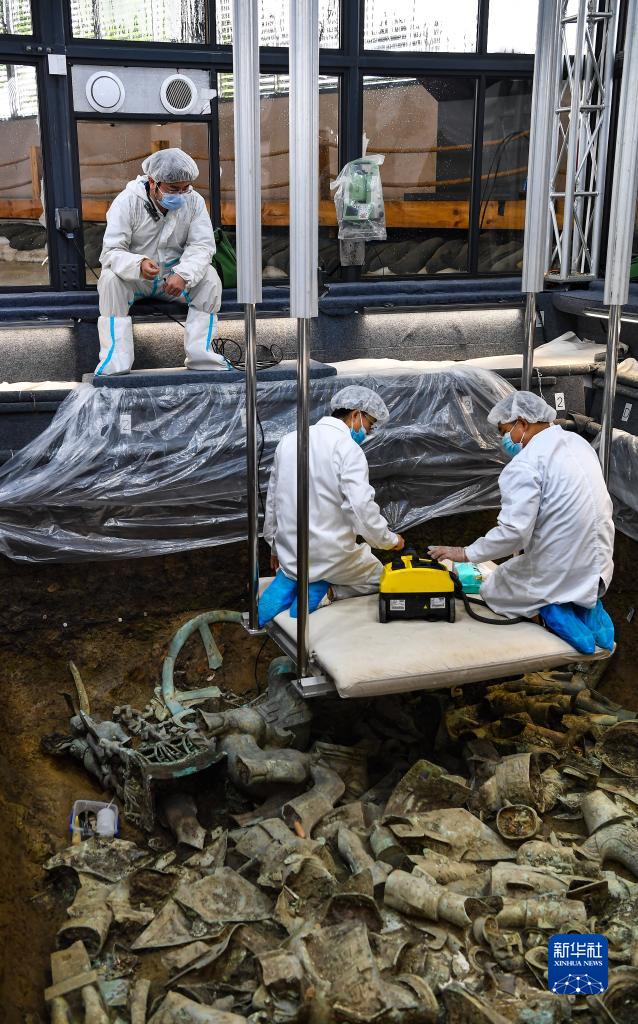
At the "Sacrifice Pit" at the No. 8 of Sanxingdui Site, Zhao Hao (first from left), the head of the "Sacrifice Pit" and the associate professor of the Peking University Archaeological Board Institute, communicated with the staff (Photo on June 1). Photo by Wang Xi, a reporter from Xinhua News Agency
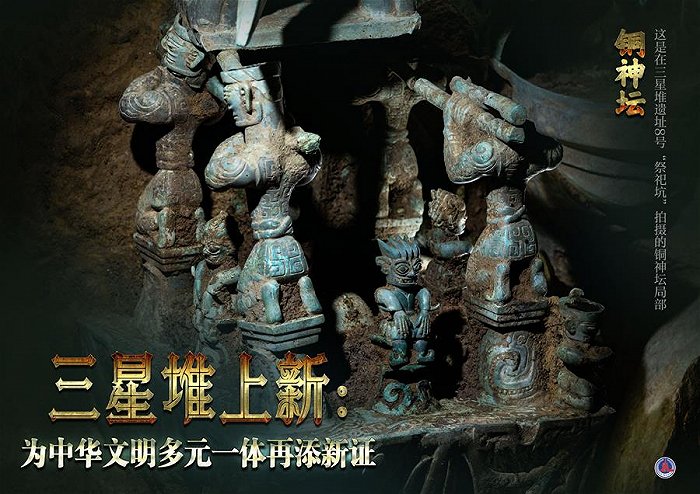
"It is not just a separate utensil, but more importantly, it depicts a sacrifice scene, representing the understanding of the world of Sanxingdui." Zhao Hao said.
This cultural relic has been discovered last year. After several months of careful cleaning, its complex and exquisite structure was revealed. The bronze altar is from three parts: low to high. The bottom is a platform with hollow patterns. The platform has a platform on the platform. Each side of the platform is sitting on one person in the center. Passion -headed shoes. There is also a group of tall "Luxi" sitting on a small table with a decorated, respectively, holding up a little beast. The little beast was also riding a skirt on his back. The little god's neck was tied up by the rope made of three copper wires, and a delicate little copper ring was buckled on the rope.
"The newly discovered utensils of the 7th and 8th 'sacrifice pit" enriched the copper category of Sanxingdui sites, showed richer types and cultural connotations, and reflected the diversity and richness of Chinese civilization. " Ran Honglin, director of the Institute of Archaeological Research Institute of the Institute, said.
Witness Chinese civilization and diversification
"Sleeping for three thousand years, awakening to the world", then an exaggerated portrait shape, so strange cultural relics, a piece of cultural relics unearthed from the previous "sacrifice pit" were directly named "weird" by archeologists. This makes many people feel puzzled. Where does Samsung Dou come from? After careful research and judgment of the newly unearthed cultural relics of Sanxingdui, archeologists have a close cultural connection with the existence of Sanxingdui sites with other regions of China. Sanxingdui is an important member of Chinese civilization.
Taking a newly discovered snake -based copper portrait of the "Sacrifice Pit" as an example, the entire cultural relics are divided into three parts. Its hands were supported on a bronze cricket with a square seat, and there was a cinnabar painted respected on his head.
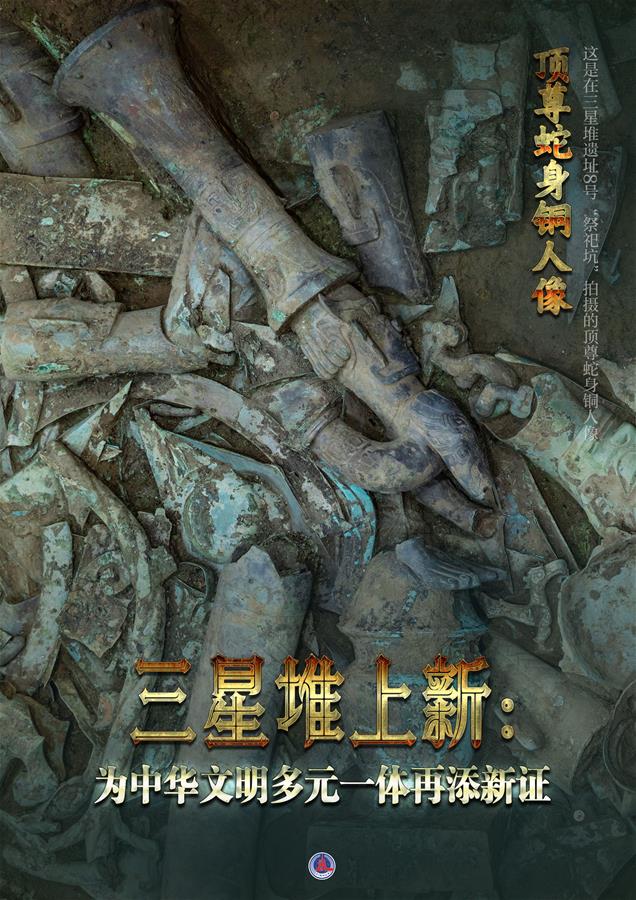
This is a bronze portrait (taken on June 1) at the "Sacrifice Pit" at No. 8 Sanxingdui Site. Photo by Wang Xi, a reporter from Xinhua News Agency
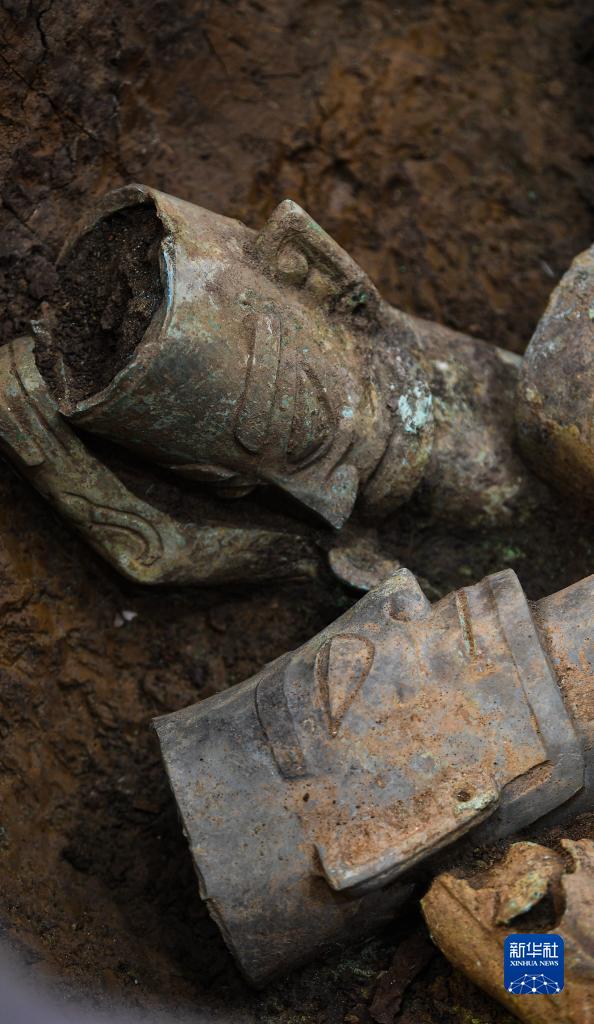
Ran Honglin told reporters: "The copper portrait has the characteristics of ancient Shu civilization. The square copper is the representative of the first Zhou culture and the representative of the Central Plains culture. These three cultural factors are gathered on the same utensils, vividly reflecting the Sanxingdui piles is the pile of Doug An important part of Chinese civilization. "
In addition, Sanxingdui newly discovered the copper, copper, and copper crickets found in the six "sacrifice pits" as typical bronze wares of the Central Plains Yin Shang culture. Yogo has discovered in Henan, Shaanxi, Shandong, and the vast number of South China. A large number of gold wares discovered are used in line with the traditional gold wares of the half -moon -shaped belt. The utensils show that the ancestors of the Sanxingdui site are similar to those in other regions of China in terms of spiritual belief.
"The peculiar cultural relics of Sanxingdui are the perfect combination of ancient Shu people's rich imagination and superb manual industry. However, the inner world reflected in the imagination is still the harmonious concept of Chinese civilization 'unity of heaven and people, and all things in all regions of China. The imagination of the world is consistent. "Ran Honglin said.
In addition to the cultural relics visible to the naked eye, archeologists have also discovered the "traces" of silk through modern scientific and technological means, filling the gaps without silk in the summer and business period in the southwestern region.
This is a bronze head (taken on May 31) at the "Sacrifice Pit" at the No. 8 Sanxingdui site. Xinhua News Agency reporter Tang Wenhao Photo
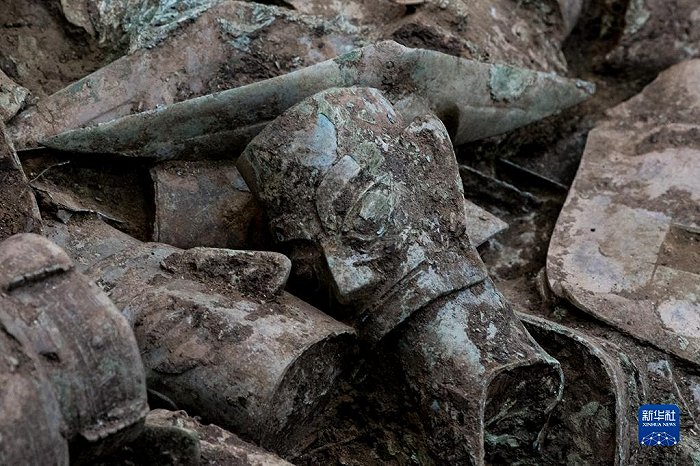
"The ancient Shu civilization represented by Sanxingdui is not only an important origin and component of Chinese civilization, but also one of the most distinctive regional culture in the ancient Chinese civilization community. In the process of Chinese civilization integration, silk is a very significant convergence Factors. Whether it is the myth, legends, historical records, or archeological discoveries, Both Bashu and Central Plains have adhered to the roughly the same knowledge system and value system. "Said Zhou Yan, deputy director of the China Silk Museum.
The mystery to be solved
While archeological excavation is promoted by tensions, the protection and repair of cultural relics and multidisciplinary research are also underway. It is understood that nearly 200 scholars including archeology, history, physics, chemistry, paleontology, paleontology, ancient geology, and ancient environmental science have participated in the on -site excavation, scientific and technological archeology, and cultural relics protection of Sanxingdui. Essence
This is the bronze god beast (taken on June 1) at the "Sacrifice Pit" at the No. 8 Sanxingdui site. Photo by Wang Xi, a reporter from Xinhua News Agency
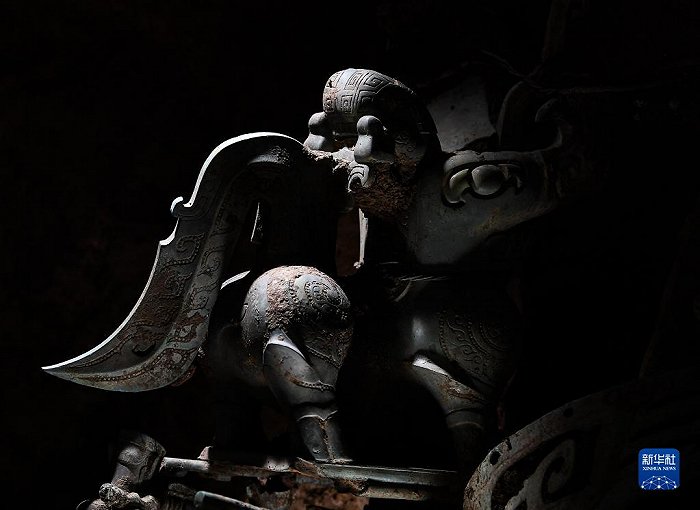
After fine cleaning and reversible physical solid type, the big mouth of the big mouth, Yuankou Fangzun, Dingzun kneeling on the "sacrifice pit" of the "sacrifice pit" before the 3rd to 6th The "heavyweight" cultural relics have achieved "standing" and exhibited to the public. Up to now, 77 bronze wares, 120 jade artifacts, 44 pieces of gold, 678 (sections) ivory, 46 ivory carving remnants have been cleaned and repaired.
After the carbon 14 test year, the era of Sanxingdui "sacrifice pit" was recognized as the late Shang Dynasty, about 3200 to 3000 years, and solved the controversy of the "sacrifice pit" in the past three decades.
Through plant archeology, scientific researchers found bamboo, reeds, cabbage, soybeans, etc. in the 4th "sacrifice pit", showing that the climate of the ancient Shu Kingdom was warm and humid, and the sacrifice area was close to the river and the vegetation was dense; There are scalpels, wild boars, etc.
This is the bronze god bird (taken on June 1) at the "Sacrifice Pit" at the No. 8 Sanxingdui Site. Photo by Wang Xi, a reporter from Xinhua News Agency
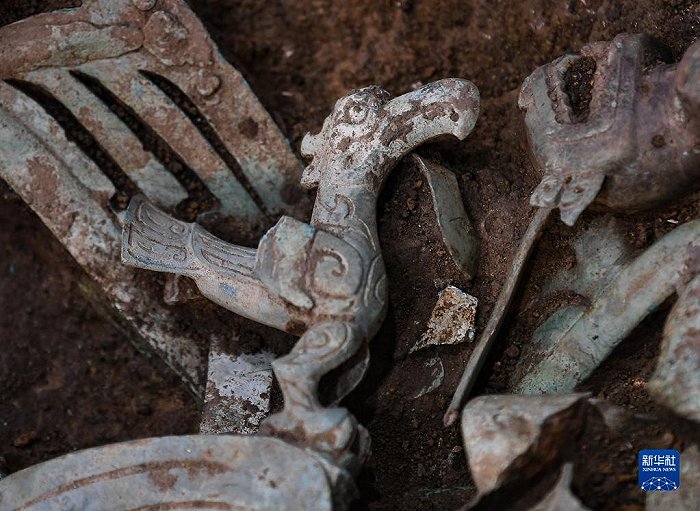
What is even more surprising is that around the eight "sacrifice pits", archeologists also found ash ditch, building foundation, and small "sacrifice pit". Human, stone, stone, jade chisel, green pine and ivory and other precious cultural relics.
Ran Honglin told reporters that the above new discoveries and research results show that the research on the Sanxingdui sacrifice area has achieved staged results. Through the continued efforts of several generations of archeologists, the scope of the Sanxingdui site and the continuation of the age have been basically clear. However, there are still many mysteries to be solved in Sanxingdui. What can be seen at present is only the situation of high -level people engaged in sacrifice activities. It is not clear about the production and living conditions of ordinary people.
"We want more to understand where the Sanxingdui life is, where we die, and where the utensils used in the sacrifice activities are created. Therefore, we must further clarify the palace area, tomb area, handicraft workshop area of Sanxingdui ruins, etc. In this way, we can restore the overall appearance of the ancient capital of Sanxingdui. "Ran Honglin said.
Original title: Samsung Dou New: Add new certificate to the diversity of Chinese civilization
- END -
[Party History Tiantian Study] Little Hero Zhang Dexin

Zhang Dexin, a native of Qianheishanzi Village, Hujia Town, Heishan County, Liaoni...
The 13th "Wan Songpu Literature Award" awards ceremony was held
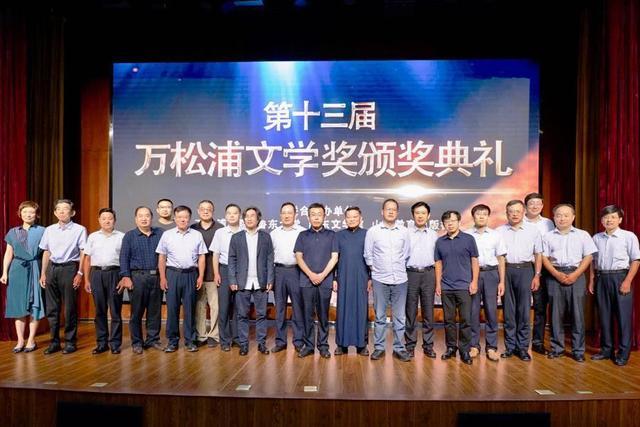
On June 12, the 13th Wan Songpu Literature Award award ceremony was held at Shando...